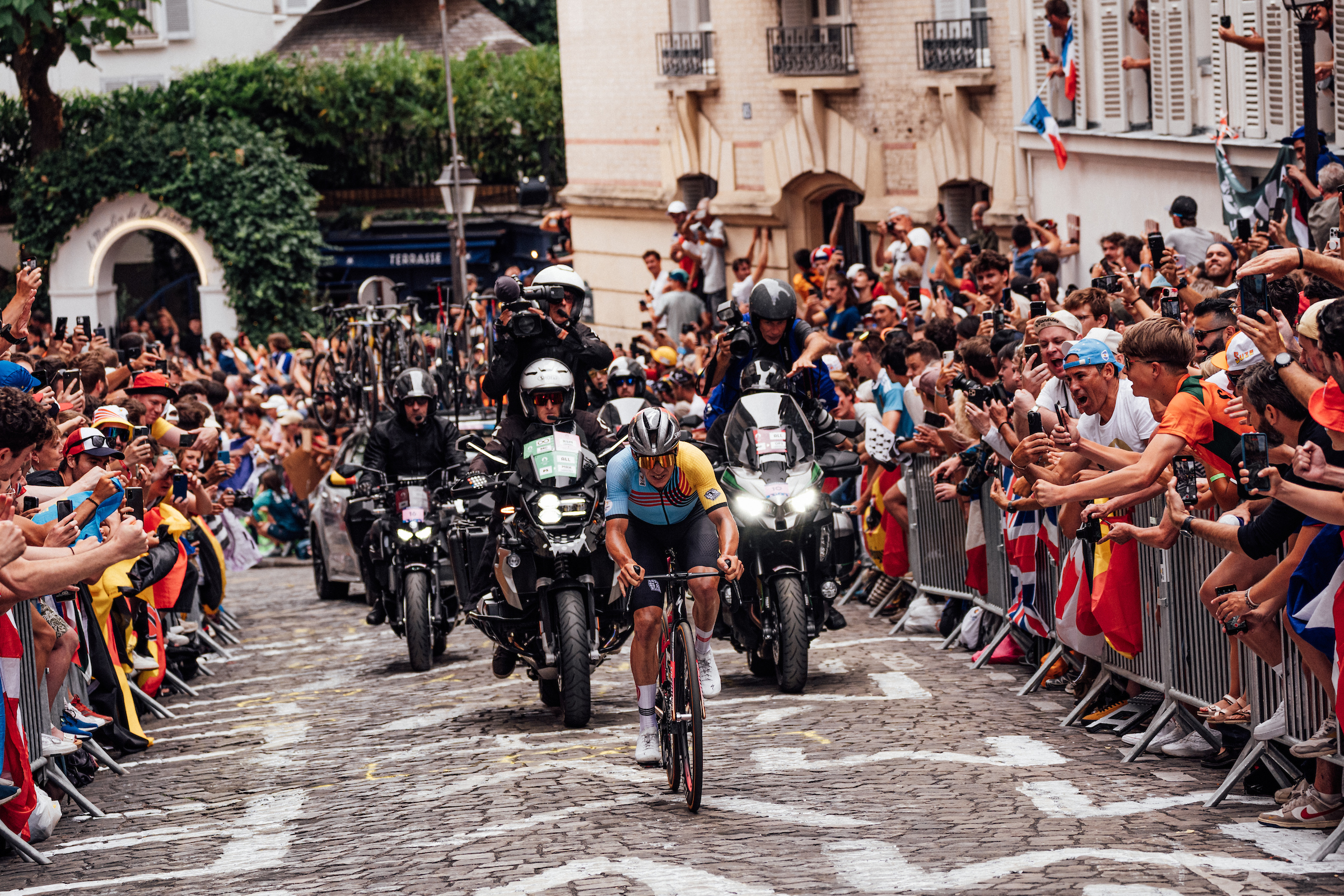
After more than half a million people flocked to the streets of Paris to watch the Olympic road race in July, the final stage of the 2025 Tour de France could include the route's highlight climb up Montmartre Hill to spice up the typically processional circuit race.
2025 marks 50 years since the iconic Champs Elysées first hosted the final stage of the Tour. The 2024 Tour finished in Nice due to preparations for the Paris Olympics but Amaury Sport Organisation (ASO), which runs the Tour, is hoping to return to Paris with the legacy of the 2024 games running through the final stage.
According to a report in Le Parisien, a file has been submitted to the Paris Police Prefecture by ASO to allow the peloton to go over Montmartre Hill and up to Sacre Cœur three times during the final stage. The iconic climb is where Mathieu van der Poel lit up the racing and hundreds of thousands of people watch the racing.
The intention would still be to finish on France's most famous avenue but without all of the laps that take in the Arc de Triomphe, Place de la Concorde and the Louvre.
Ever since Greg LeMond's dramatic final day time trial win and last-minute snatch of the yellow jersey in 1989, the Tour's final stage has come to be a day for the yellow jersey to celebrate arm-in-arm with his teammates before the sprinters battle it out on the Champs-Elysées.
After the excitement of the Paris Olympic games and the incredible atmosphere brought by such a large fan turnout, the idea of the Butte Montmartre characterising the Tour was quickly ruled out by the Tour’s technical director Thierry Gouvenou who said "It wouldn't be acceptable."
The biggest barrier to this idea materialising is the logistical nightmare it would produce for the organisers, with the Tour's maximum peloton size of 176 being significantly larger than that of the 90 riders who raced at the Olympics.
That number was also vastly smaller once they hit Montmartre Hill, as the smaller nations quickly dropped behind the top countries. Rue Lepic is also a very narrow cobbled road, making it very difficult for vehicles to follow and unimaginable for a convoy of team cars to make it through, meaning a mechanical could be catastrophic.
"The Tour de France peloton is twice as big as it was at the Olympics, so we'd have to find much bigger streets than those used to map out a new circuit," Gouvenou told L’Équipe in August.
"Towards Montmartre, they went through some very narrow places, real bottlenecks. In some places, if they needed to provide mechanical service to riders at the back of the bunch, they’d barely have been able to open the car doors. It worked yesterday here, but it wouldn't be acceptable during the Tour."
After the excitement of the Paris Oympic games and the incredible atmosphere brought by such a large fan turnout, the idea of the Butte Montmartre characterising the Tour was quickly ruled out by the Tour’s technical director d Montmartre, making it probable this idea remains a dream for ASO.







